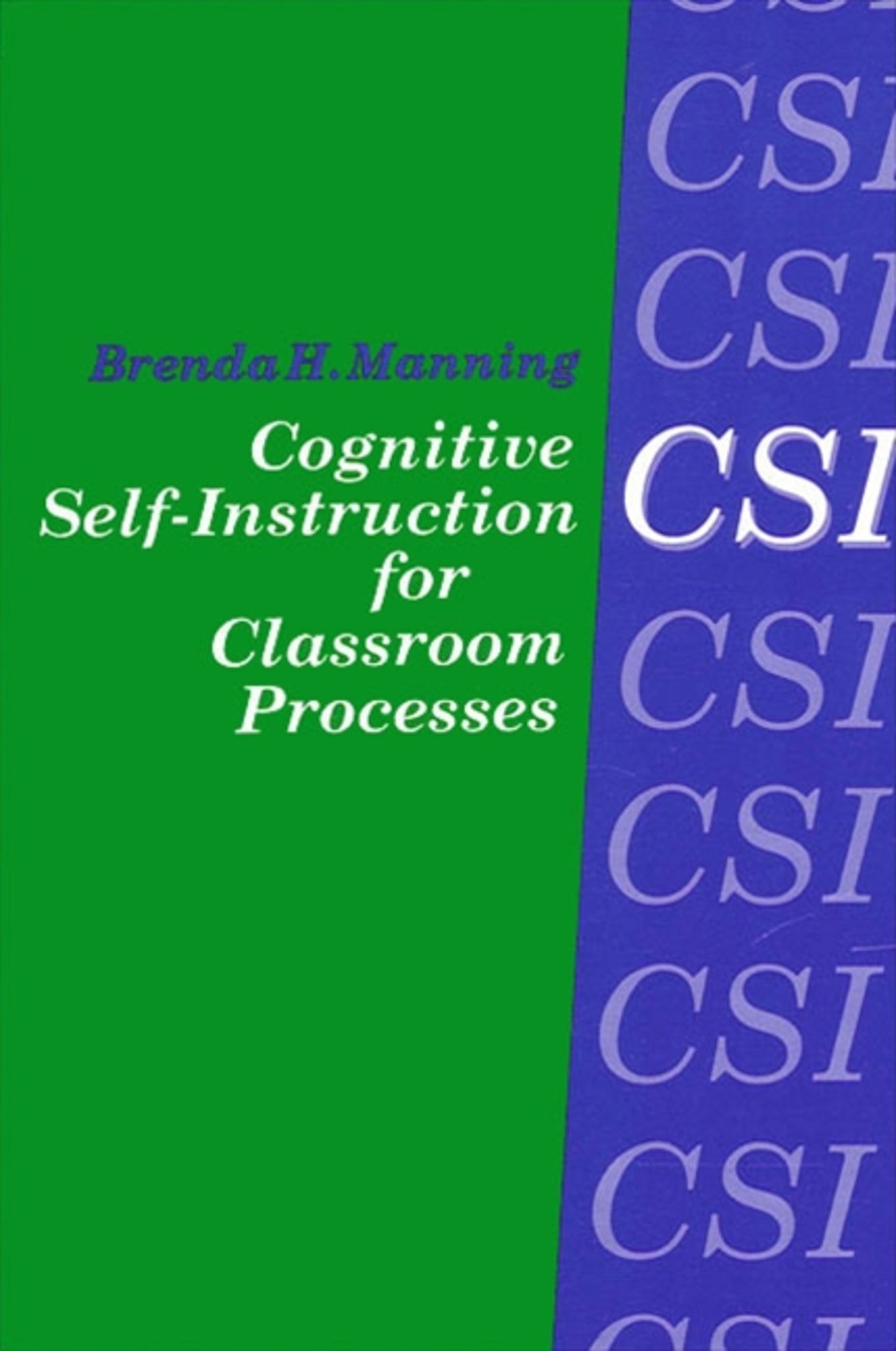We're sorry. An error has occurred
Please cancel or retry.
Cognitive Self-Instruction (CSI) for Classroom Processes

Some error occured while loading the Quick View. Please close the Quick View and try reloading the page.
Couldn't load pickup availability
- Format:
-
02 May 1991

Metacognitive strategies such as cognitive self-instruction have important implications for teaching and learning. Cognitive self-instruction (CSI) has proven successful in improving memory, comprehension, problem-solving, and behavioral self-control of both teachers and students.
This book is the first to combine the theoretical/conceptual and research aspects of CSI with applied classroom practices. Drawing on over a decade of research and utilization of the methods described here, Manning suggests applications of CSI for classroom strategies, classroom management, and teacher reflection.


"The author has compiled and synthesized a large body of work regarding cognitive self-instruction (CSI). However, the chapters in which the applications of CSI for classroom use (both by teachers and students) are described are the most valuable, because they demonstrate that theory and research can inform practice." — Dr. Jack Riley, Department of Teacher Education, Samford University
Preface
Acknowledgments
Introduction
Part One: Theoretical and Conceptual Framework of Cognitive Self-Instruction
Overview of Part One
1. Historical/Theoretical Perspectives of Cognitive Self-Instruction
Theory of Verbal Self-Regulation
Zone of Proximal Development
Concept of Mediation
A.R. Luria and A.N. Leonet'ev Contributors
2. Metacognition
Flavell's Concept of Metacognition
Flavell's Taxonomy of Metacognition
Comprehension Monitoring
3. Other-Regulation
Proleptic/Dyadic Instruction
Cognitive Behavior Modification
Informed Training
Reciprocal Teaching
4. Theories Related to Verbal Self-Regulation
Attribution Theory
Information-Processing Theory
Self-Efficacy
Self-Regulated Learning
5. Related Cognitive Psychologies: CSI
Affective Side of Metacognition
Rational Emotive Therapy (Albert Ellis)
Transactional Analysis (Eric Berne/Thomas Harris)
The Language of Self-Support (Pamela E. Butler)
Self-Talk (Shad Helmstetter)
Summary of Part One
Part Two: Related Research in Cognitive Self-Instruction
Overview of Part Two
6. CSI Research by Grade Levels/Domains
Metamemory
Comprehension Monitoring
Dyadic Problem Solving
Cognitive Self-Control
Metacognitive Instruction for Academic Subjects
Summary of Part Two
Part Three: Classroom Application of Cognitive Self-Instruction
Overview of Part Three
7. Manning CSI Model
Modeling
Practicing
Cueing
Sample Lesson Plans
Additional Strategies
Where Does CSI Fit?
8. CSI Teaching Strategies
Metamemory
Comprehension Monitoring
Dyadic Problem Solving
Cognitive Self-Control
CSI Reinforcement
9. CSI by Grade-Level Divisions
Preschool
Early Elementary
Middle School
Secondary/College
Adults
10. Starting and Maintaining CSI Program
Introductory CSI Strategies
Self-Communication Classroom Environment
Diminish or Eliminate Unhelpful Self-Communication
CSI—Academic Subject Matter
CSI—Classroom Management Option
Transfer CSI Use from School to Home
Case Sudy: Using CSI for Attention Problems
CSI Materials and Helpful Aids
Summary of Part Three
A Final Word
Bibliography
Index



